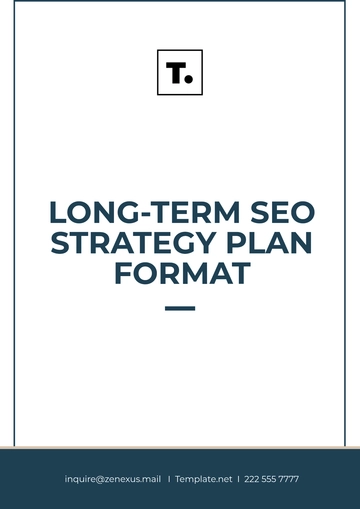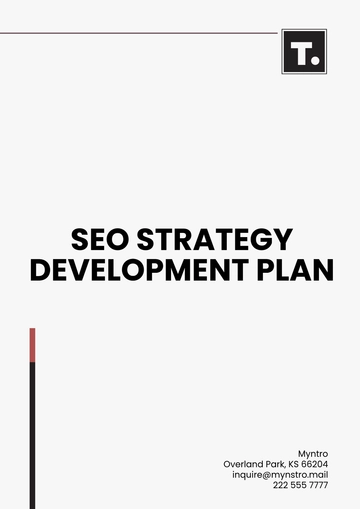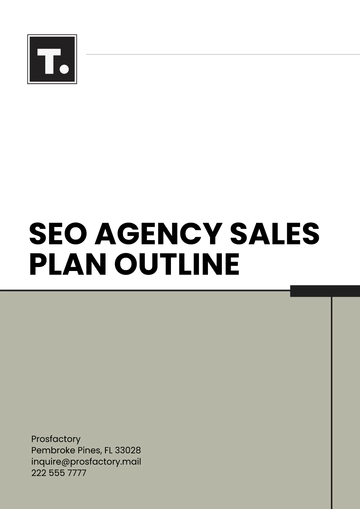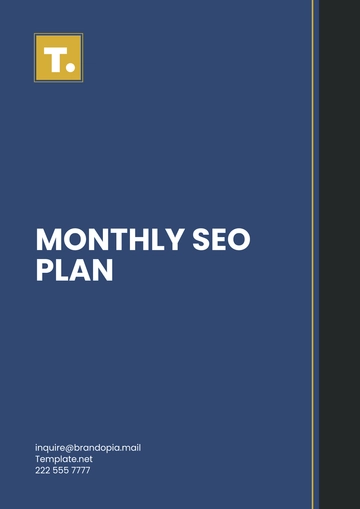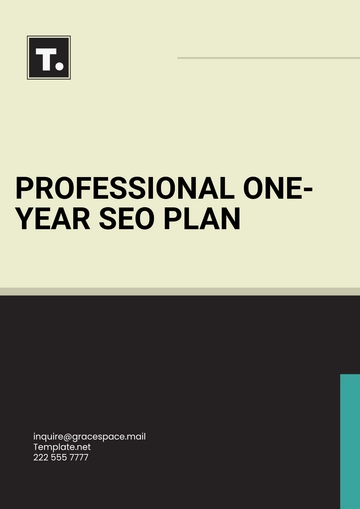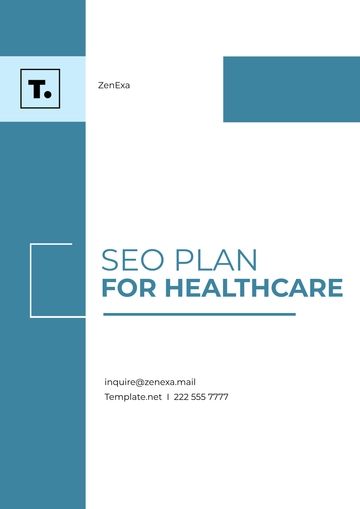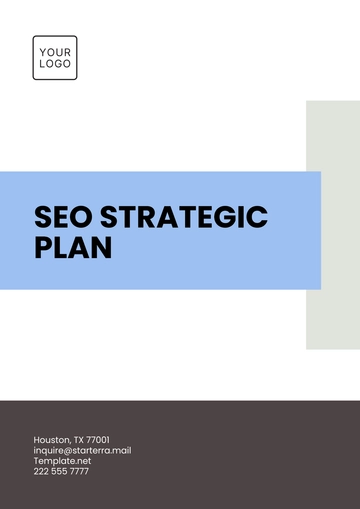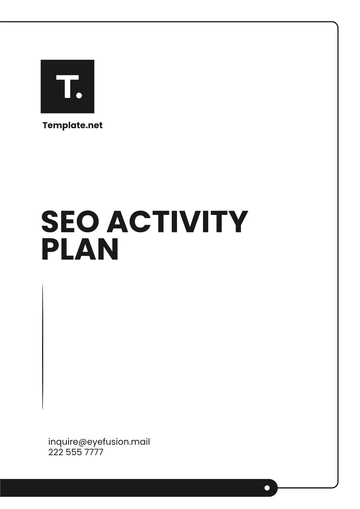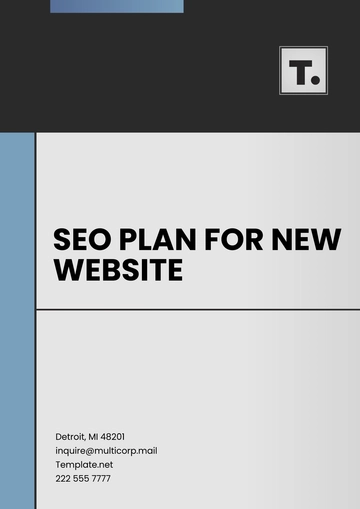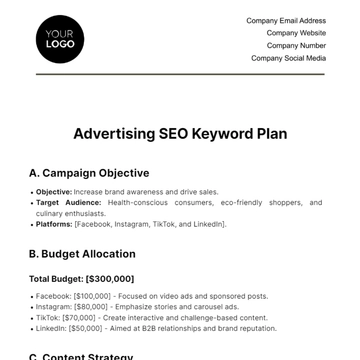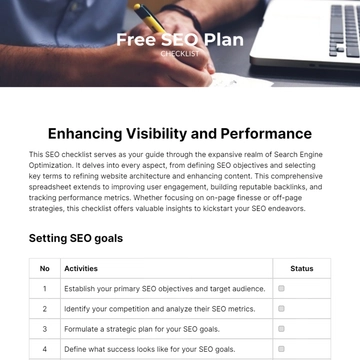Free SEO Plan for New Website
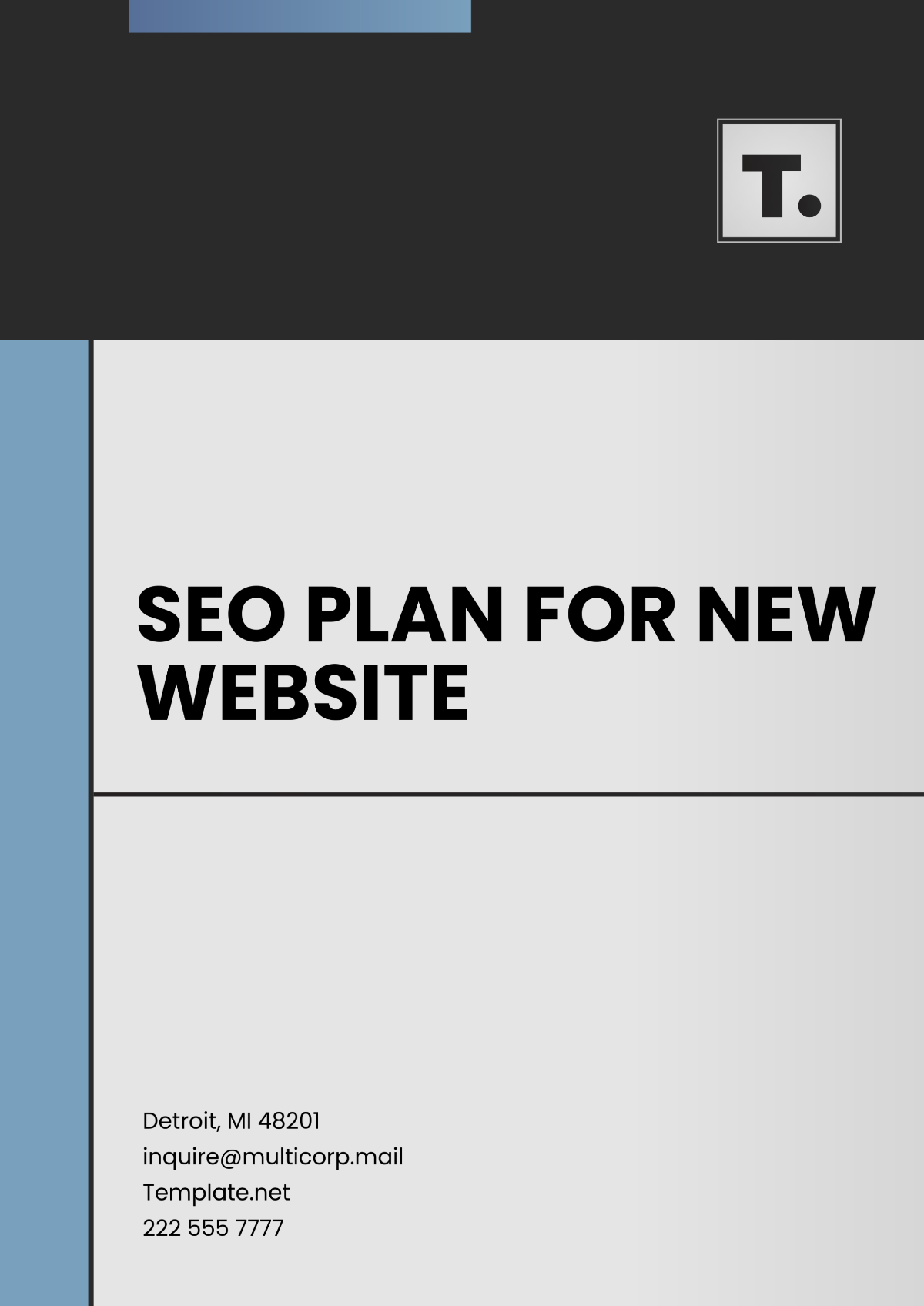
I. Executive Summary
In this detailed SEO plan, we meticulously outline strategies and tactics to bolster brand visibility and orchestrate a triumphant launch for [YOUR COMPANY NAME]'s new website. By strategically optimizing for search engines, our primary objectives encompass attracting targeted organic traffic, escalating brand awareness, and fostering lead generation to propel business growth and success.
II. Website Analysis
A comprehensive analysis of the website serves as the cornerstone of our SEO endeavors, comprising:
Aspect | Description |
|---|---|
Technical Audit |
|
Keyword Research |
|
Competitive Analysis |
|
III. On-Page Optimization
The bedrock of enhancing search engine visibility lies in meticulous on-page optimization, encompassing:
Element | Description |
|---|---|
Meta Tags Optimization |
|
Content Optimization |
|
URL Structure Optimization |
|
Internal Linking |
|
IV. Off-Page Optimization
Off-page optimization endeavors are geared toward cultivating authority and credibility for the website, encompassing:
Strategy | Description |
|---|---|
Link Building |
|
Social Media Integration |
|
V. Content Strategy
Compelling and informative content serves as the linchpin for audience engagement and retention, with strategies including:
Strategy | Description |
|---|---|
Content Calendar |
|
Blog Creation |
|
Visual Content |
|
VI. Performance Tracking
Rigorous monitoring and analysis of website performance are indispensable for gauging the efficacy of SEO endeavors, encompassing:
Metric | Description |
|---|---|
Organic Traffic |
|
Keyword Rankings |
|
Conversion Rate |
|
VII. Timeline and Milestones
The phased execution of the SEO plan is delineated as follows:
Month | Activities |
|---|---|
Month 1-2 |
|
Month 3-4 |
|
Month 5-6 |
|
Ongoing |
|
VIII. Conclusion
The meticulous implementation of the multifaceted strategies delineated in this SEO plan is poised to catapult [YOUR COMPANY NAME] to the vanguard of search engine rankings, fortifying brand visibility, attracting targeted organic traffic, and realizing overarching business objectives in the fiercely competitive digital landscape. With an unwavering focus on premium content, ethical link acquisition, and data-driven optimization, we stand poised to secure enduring success and sustained growth for the website, affirming its prominence as a beacon of excellence in its respective domain.
- 100% Customizable, free editor
- Access 1 Million+ Templates, photo’s & graphics
- Download or share as a template
- Click and replace photos, graphics, text, backgrounds
- Resize, crop, AI write & more
- Access advanced editor
Boost your new website's visibility with Template.net's SEO Plan for New Website Template. This customizable and editable template is designed to enhance your site's search engine ranking effortlessly. Leverage the power of the AI Editor Tool for seamless optimization. Ensure your website attracts more traffic with this essential SEO tool.
You may also like
- Finance Plan
- Construction Plan
- Sales Plan
- Development Plan
- Career Plan
- Budget Plan
- HR Plan
- Education Plan
- Transition Plan
- Work Plan
- Training Plan
- Communication Plan
- Operation Plan
- Health And Safety Plan
- Strategy Plan
- Professional Development Plan
- Advertising Plan
- Risk Management Plan
- Restaurant Plan
- School Plan
- Nursing Home Patient Care Plan
- Nursing Care Plan
- Plan Event
- Startup Plan
- Social Media Plan
- Staffing Plan
- Annual Plan
- Content Plan
- Payment Plan
- Implementation Plan
- Hotel Plan
- Workout Plan
- Accounting Plan
- Campaign Plan
- Essay Plan
- 30 60 90 Day Plan
- Research Plan
- Recruitment Plan
- 90 Day Plan
- Quarterly Plan
- Emergency Plan
- 5 Year Plan
- Gym Plan
- Personal Plan
- IT and Software Plan
- Treatment Plan
- Real Estate Plan
- Law Firm Plan
- Healthcare Plan
- Improvement Plan
- Media Plan
- 5 Year Business Plan
- Learning Plan
- Marketing Campaign Plan
- Travel Agency Plan
- Cleaning Services Plan
- Interior Design Plan
- Performance Plan
- PR Plan
- Birth Plan
- Life Plan
- SEO Plan
- Disaster Recovery Plan
- Continuity Plan
- Launch Plan
- Legal Plan
- Behavior Plan
- Performance Improvement Plan
- Salon Plan
- Security Plan
- Security Management Plan
- Employee Development Plan
- Quality Plan
- Service Improvement Plan
- Growth Plan
- Incident Response Plan
- Basketball Plan
- Emergency Action Plan
- Product Launch Plan
- Spa Plan
- Employee Training Plan
- Data Analysis Plan
- Employee Action Plan
- Territory Plan
- Audit Plan
- Classroom Plan
- Activity Plan
- Parenting Plan
- Care Plan
- Project Execution Plan
- Exercise Plan
- Internship Plan
- Software Development Plan
- Continuous Improvement Plan
- Leave Plan
- 90 Day Sales Plan
- Advertising Agency Plan
- Employee Transition Plan
- Smart Action Plan
- Workplace Safety Plan
- Behavior Change Plan
- Contingency Plan
- Continuity of Operations Plan
- Health Plan
- Quality Control Plan
- Self Plan
- Sports Development Plan
- Change Management Plan
- Ecommerce Plan
- Personal Financial Plan
- Process Improvement Plan
- 30-60-90 Day Sales Plan
- Crisis Management Plan
- Engagement Plan
- Execution Plan
- Pandemic Plan
- Quality Assurance Plan
- Service Continuity Plan
- Agile Project Plan
- Fundraising Plan
- Job Transition Plan
- Asset Maintenance Plan
- Maintenance Plan
- Software Test Plan
- Staff Training and Development Plan
- 3 Year Plan
- Brand Activation Plan
- Release Plan
- Resource Plan
- Risk Mitigation Plan
- Teacher Plan
- 30 60 90 Day Plan for New Manager
- Food Safety Plan
- Food Truck Plan
- Hiring Plan
- Quality Management Plan
- Wellness Plan
- Behavior Intervention Plan
- Bonus Plan
- Investment Plan
- Maternity Leave Plan
- Pandemic Response Plan
- Succession Planning
- Coaching Plan
- Configuration Management Plan
- Remote Work Plan
- Self Care Plan
- Teaching Plan
- 100-Day Plan
- HACCP Plan
- Student Plan
- Sustainability Plan
- 30 60 90 Day Plan for Interview
- Access Plan
- Site Specific Safety Plan





